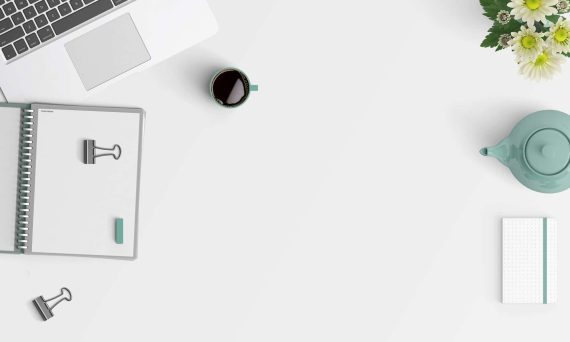How to organise your desk (and keep it that way)
Nobody likes an untidy home. But shouldn’t your home away from home be the same? If you’re struggling to get work done and often find yourself distracted and unproductive, it might be time to take a look at your workstation. How much do you have on your desk? How much of it do you use on a regular basis? Can you even see the surface?Say goodbye to the untidy desk of the past. Our incredibly easy-to-follow desk organisation tips will have you clutter-free in no time at all.
1. Start with a declutter
Before you can move forward into an organised future, you first need to look at where you are now and make some changes. There’s little point in organising items on your desk that you just aren’t going to use, so now’s the time to be a bit brutal. While you may think you’re getting rid of a lot of useful items, the point is to only have what you absolutely need and replace when it can no longer be used. Start by looking at any duplicates in your drawers. This includes notepads, pens, pencils, gel pens, sticky notes… Keep two notepads - one for jotting and scribbles and one for meetings - and two or three pens. Donate the rest to your colleagues, or drop them in your office stationery cupboard.2. Go paperless
A huge amount of clutter on our office desk is due to paper. Printed out emails, presentations, folders, sticky notes, to-do lists… it’s endless! Fortunately there is an easy fix, go paperless! Use spreadsheets to stay organised with your tasks and use note taking apps like Evernote or Google Keep. Use Dropbox to share folders with colleagues instead of printing things out, which helps cut back on paper waste too.3. Wire control
The typical workstation is far from technology-free. When you take into account a laptop, a monitor, a mouse, a keyboard, chargers and phones, the number of wires facing us can quickly get out of control. Concealing messy wires is an easy step to take to reduce clutter and your stress levels. If your desk doesn’t have wire slots or holes, it’s a quick and easy DIY desk organisation project using binder clips to hold them all together and out of sight.4. Label cords
We’ve all been there. You’re up to your ears in an important project and have been working away for hours, when all of a sudden, your laptop dies before your eyes, the dreaded empty battery blinking back at you. No worries, just plug it back in. But you crawl under your desk to be faced with a jungle-like tangle of wires and cords. Take some time to detangle the wires one by one, wrap colourful pieces of tape around them and label which powers which device. Not only does it distinguish your wires from your neighbour’s, in the event of a battery emergency, you can get back up and running in no time.5. Limit sticky notes
If you’re a lover of sticky notes, then you probably feel organised, and that’s true to an extent. They’re easy to grab and jot your thoughts down on, but before you know it you have 20 of them stuck to your computer screen when you could have just made one coherent to-do list. Find yourself going overboard? Try going cold turkey and you’ll find the clutter disappear instantly, and your urge to use them will slowly diminish too. When you do use them, use them sparingly and only for urgent reminders, and discard them when you’re finished.6. Keep your inbox under control
Staying organised isn’t just about keeping your desk free of clutter. Even if you leave things spic and span, a chaotic inbox can be just as overwhelming as a desk piled high with papers. While we wouldn’t recommend going the whole hog with a complex labelling system, which can be tricky to implement and follow in the long term as well as creating more work, there are little things you can do to make a big difference. If you use Gmail, which most offices do nowadays, simply switch your settings to Priority mode - which will cause unread emails to jump to the top of your inbox, and leave them unread until they have been dealt with. Once they have been dealt with, archive them just in case. Be vigilant with your newsletters and subscriptions and delete them if you find you aren’t reading or using them.If you find that too many internal conversations are happening over email and it’s clogging up your inbox, suggest to your office that you switch to Slack instead.7. Prioritise your work
Now that your desk is sorted, it’s time to look at the way you work with our final organisation tip. The only things out in front of you should be your necessary work supplies like a laptop, notepad and pen, along with any relevant and active projects you are working on. Keep things simple and stress-free.If you find that work keeps piling up, it can easily become overwhelming which only leads to procrastination. Stay on top of things as much as you can by using the following system of prioritisation:- Important and urgent
- Urgent but not important
- Important but not urgent
- Not urgent and not important

